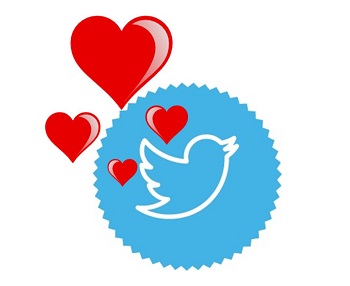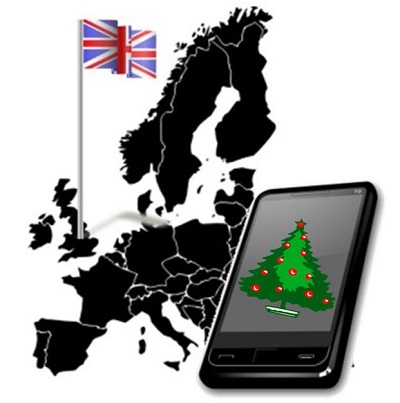The “favorites” that had previously been represented by a star icon are now heart shaped “likes”
Twitter has been undergoing a number of changes – some larger than other – in order to boost its social media marketing and user growth that has been waning over the last while, and its latest effort has been a cosmetic one.
The little yellow star that was once meant for favorites has been changed into a little red heart for likes.
According to Twitter, itself, the reason it made the change was that the star icon was potentially leading to confusion among its users. However, the heart icon is more universally recognized around the globe as indicative of something that you like or love. However, this change has not necessarily been generating a tremendous number of heart shaped responses from the actual users of this network and it is unclear as to what impact it will have on social media marketing on that platform.
The hope is that tweeting and social media marketing will occur with less confusion using hearts and likes.
 Many people have been complaining that it wasn’t the star but the change that has been the most confusing. The reason is that they felt the star was unique to Twitter and that users were able to figure out what it was for and when to use it. However, the heart is found all over other social media platforms and is used for different purposes. For example, it is an emoticon/emoji in Facebook and Instagram. By changing to the heart, some users have complained that Twitter is reducing its uniqueness.
Many people have been complaining that it wasn’t the star but the change that has been the most confusing. The reason is that they felt the star was unique to Twitter and that users were able to figure out what it was for and when to use it. However, the heart is found all over other social media platforms and is used for different purposes. For example, it is an emoticon/emoji in Facebook and Instagram. By changing to the heart, some users have complained that Twitter is reducing its uniqueness.
Twitter, as a whole, can be rather intimidating for a brand new user. The entire concept often feels mysterious to a person who is only just beginning. However, it usually doesn’t take long to figure out and it is hardly something that requires vast tech degrees, say users who have tweeted their frustration about the change. That said, they pointed out that among all the features in Twitter and its social media marketing that can be considered the most confusing, the little star for “favorites” was hardly the greatest offender.
Consumers in the United Kingdom will spend an estimated £2.3 billion making purchases on smartphones and tablets.
Recent statistics released by a forecast from Adobe have shown that shoppers in the United Kingdom will be using mobile commerce this year more than ever before when it comes to buying everything they need for their Christmas celebrations.
The prediction from the forecast is that m-commerce will comprise 23 percent of all online holiday shopping.
That percentage will mean that about £2.3 billion of holiday purchases in the United Kingdom will have been made over mobile commerce, this year. The Adobe study predicts that sales overall will also increase by 7 percent when compared to last year, bringing the total to a hefty £17.7 billion. Online shopping will make up about 57 percent of that total figure. The U.K. will also experience the largest one-day shopping peak online when compared to all European countries. The prediction is that “Black Friday” on November 27 will generate £474 in online sales. The average spending across the country will be £8.06 per person on that one day.
The portion of the spending that will occur over mobile commerce has never been higher in the U.K.
 Mark Zablan, the president of Adobe EMEA, said that “This year’s report once again underscores the importance of the Christmas shopping season as a driver for eCommerce across Europe, giving consumers the ability to take advantage of low prices, retailer offers and product variety without battling crowds on the High Street.”
Mark Zablan, the president of Adobe EMEA, said that “This year’s report once again underscores the importance of the Christmas shopping season as a driver for eCommerce across Europe, giving consumers the ability to take advantage of low prices, retailer offers and product variety without battling crowds on the High Street.”
That said, Zablan also pointed out that consumers are looking for more than a great deal. The Adobe report underscored the importance of being able to obtain access to product reviews in order to make their buying choices. Social media is also expected to continue to play a vital role in the decision making process for Christmas present shopping.
He indicated that European retailers will want to pay close attention to those insights, as it means that they will need to go beyond simply advertising that they have the best deals. They will be required to “create meaningful opportunities to engage with consumers throughout the customer journey that will drive them to the point of purchase.” In that effort, Zablan said that social media will be a central mobile commerce player.
 Many people have been complaining that it wasn’t the star but the change that has been the most confusing. The reason is that they felt the star was unique to Twitter and that users were able to figure out what it was for and when to use it. However, the heart is found all over other social media platforms and is used for different purposes. For example, it is an emoticon/emoji in Facebook and Instagram. By changing to the heart, some users have complained that Twitter is reducing its uniqueness.
Many people have been complaining that it wasn’t the star but the change that has been the most confusing. The reason is that they felt the star was unique to Twitter and that users were able to figure out what it was for and when to use it. However, the heart is found all over other social media platforms and is used for different purposes. For example, it is an emoticon/emoji in Facebook and Instagram. By changing to the heart, some users have complained that Twitter is reducing its uniqueness.
 Mark Zablan, the president of Adobe EMEA, said that “This year’s report once again underscores the importance of the Christmas shopping season as a driver for eCommerce across Europe, giving consumers the ability to take advantage of low prices, retailer offers and product variety without battling crowds on the High Street.”
Mark Zablan, the president of Adobe EMEA, said that “This year’s report once again underscores the importance of the Christmas shopping season as a driver for eCommerce across Europe, giving consumers the ability to take advantage of low prices, retailer offers and product variety without battling crowds on the High Street.”